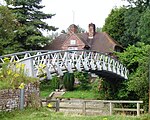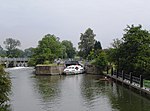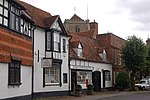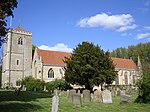The Poem Tree
2010s individual tree deathsCulture in OxfordshireEnglish poemsHistory of OxfordshireIndividual beech trees ... and 1 more
Individual trees in England

The Poem Tree was a beech tree with a poem carved into it by Joseph Tubb, located on Castle Hill at Wittenham Clumps in Oxfordshire, England. The tree was believed to be around 300 years old, with Tubb's poem being carved in the 1840s. The tree died in the 1990s and rotted completely while standing, before collapsing during a period of inclement weather in July 2012.A stone, including a transcription and rubbing of the poem, was erected close to the tree in 1994, to commemorate the 150th anniversary of the carving.
Excerpt from the Wikipedia article The Poem Tree (License: CC BY-SA 3.0, Authors, Images).The Poem Tree
Star Walk, South Oxfordshire Little Wittenham
Geographical coordinates (GPS) Address Nearby Places Show on map
Geographical coordinates (GPS)
| Latitude | Longitude |
|---|---|
| N 51.628238888889 ° | E -1.1785805555556 ° |
Address
Star Walk
OX10 7JL South Oxfordshire, Little Wittenham
England, United Kingdom
Open on Google Maps










